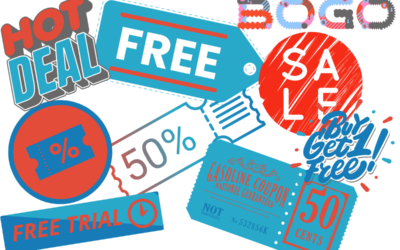In recent years, a great many software companies have discarded their licensing model in favor of a subscription-based model. One of the main reasons for this is because it benefits both the consumer and business owner: consumers have access to software they might otherwise not be able to afford, and business owners could be able to have a more reliable revenue stream. This article will help you consider the main differences between a licensing model and a subscription-based model. Additionally, we’ll cover how subscription software can manage recurring billing effectively.
Software Licensing
Of the two billing models, the licensing model is by far the older system. Back when software was originally being provided to consumers, software was generally delivered to customers with upfront pricing. This means that after buying the software, the consumer would have access to it basically forever.
In order for companies to entice consumers to purchase more of their product, those companies were obliged to develop significant upgrades or bigger and better versions of their product. The licensing model has not been entirely discarded because it still makes good sense for some products. However, by and large, it has been replaced by the subscription software model, which is far more advantageous to business owners because the revenue stream from subscriptions is more consistent and reliable.
Subscription Software Model
In general, as a consumer, when you have a subscription service for software, you need to pay a software development company every month or once a year in order to continue accessing that software. This amount is generally much less than the license model would be, and that means more consumers can take advantage of its much more affordable pricing. Sophisticated software that users might not ordinarily be able to afford is thus made available to them on a regular basis so they can enjoy all the benefits it can provide.
Of course, to keep the existing pool of customers interested in the software and attract more subscribers, its developers need to work on updating the software features regularly, adding new features and more functionality. At the time the customer stops paying for the software service, the software company would discontinue access to it.
Benefits of Subscription Software
There are quite a few different pricing strategies associated with subscription software and its billing schemes. One popular approach is to charge consumers by their usage time, but there are other methods as well. This provides considerable flexibility, and any business owner can experiment with each of these types until one which is most beneficial to the company is hit upon.
Another big benefit of subscription software is that you have a chance to gain a great many more customers because they’ll be able to afford a lower monthly subscription rate as opposed to an expensive, one-time license payment. While corporations would not have any difficulty paying the licensing charge, many consumers would find it outside their budget, and would therefore be excluded from the target audience which might potentially purchase software.
One more subtle advantage of subscription software is that it helps build better customer relationships since it relies on continuous updates and continuous interaction between company and consumer. Rather than isolating your company and your development team from consumers, you’ll learn to respond regularly to their needs, and you’ll probably get into the habit of anticipating those needs based on customer feedback.
You’ll find that your customer acquisition costs are much lower when you use a subscription software model because it will be easier to entice users to purchase your software, given its affordability. That will also allow you to maximize your profits because the volume of your customer base will be much greater.
Choosing Between the Two Models
Before making a choice as to which pricing model is best suited for your company, you should review all your fixed costs, for instance, office space, payroll, and software-related purchases, as well as your variable costs, which would include advertising and contractor costs. Then you should calculate how expensive a license would have to be in order to cover all those costs, until the release of its next version.
By the same token, in looking at a subscription model, you should calculate how much you would charge customers on a regular basis (monthly, yearly, etc.) to cover your expenses. Keep in mind that the cost of customer acquisition will always be lower for subscription customers as opposed to customers purchasing a perpetual license.
It’s also very important to have a good understanding of exactly who your customers are. You should know whether the bulk of your customers are professionals or whether they are amateurs who simply enjoy using your product. Market research will tell you how much your customers are willing to spend on your product and whether they value simplicity more or having a number of options. When you have the answer to these questions, you will be able to evaluate whether a licensing model is more beneficial to your company or whether a subscription service will be more financially advantageous.
Subscription Services from Kill Bill
After evaluating the differences between licenses and subscriptions, perhaps you’ll decide you’re ready to look for the best subscription service for your own business. Kill Bill’s subscription management software is a full-featured service that allows you to do everything necessary in support of a regular subscription service – whether it’s monthly, yearly or some other time period.
In addition to being able to carry out all kinds of customer service tasks, you’ll also be able to edit any subscription plans or your pricing scheme in real-time. In short, all your accounts and subscriptions, payments, and invoices can be managed from a single source, thereby relieving you of all the manual tedium you would otherwise be confronted with. Using Kill Bill will also avoid the potential to overlook mistakes, which could generate bad relations with your customers.



